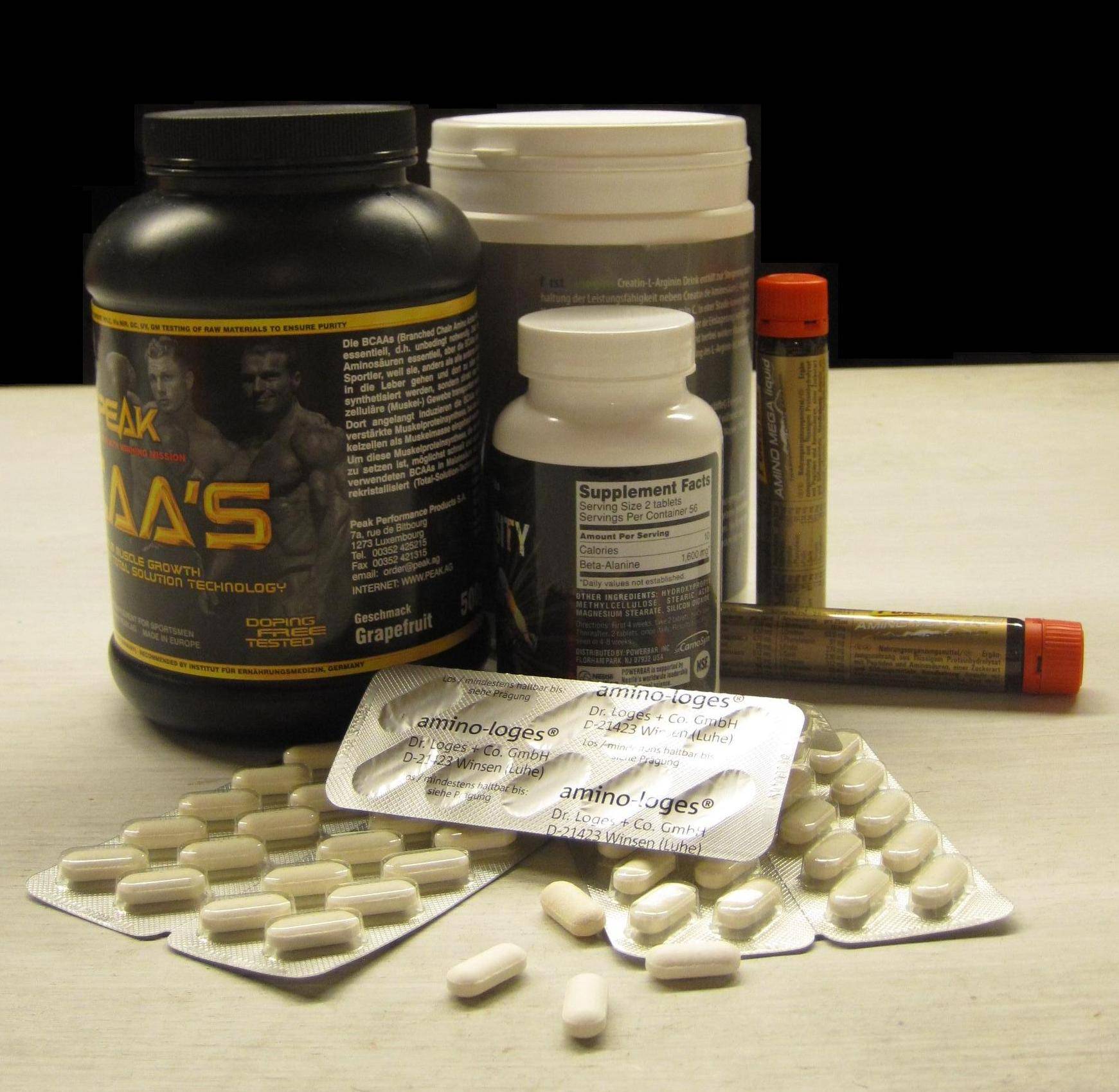Is protein the same as protein? No. Is egg white the same as protein? Yes. The synonymous use of the terms "protein" and "protein" comes from the history of nutritional research and has always caused confusion. You can read here how the relationships between usability, consumption, availability and tolerability look like and how triathletes can benefit from their knowledge.
basics
The percentage of protein is declared on almost every food packaging. The correct term would actually be protein, because it rarely refers to the white of the egg. In addition to water, egg white consists almost exclusively of protein, and so in the 19th century, the beginning of nutritional research, the two terms were mixed up, which continues to this day. In the following, only the more precise term “protein” will be used.
Next to carbohydrates and fat, protein is the third basic building block of nutrition. Carbohydrates are primarily used to generate energy, fat to store energy, and protein to build and repair endogenous substances such as muscles and tendons. The higher the need for repair or development, i.e. the stronger the training load or the training stimulus, the greater the importance of an adequate protein supply.
Nitrogen makes the difference
What is the difference between protein and carbohydrates and fat? Only protein supplies the element nitrogen (chemical symbol N) in a form that the body can use in sufficient quantities. Nitrogen is part of the chemical structure of amino acids, of which there are 22 different types in the human body. A chain of two to about one hundred amino acids is referred to as a "peptide", beyond that one speaks of a "protein". In order to be able to be utilized, proteins have to be broken down into individual amino acids by the digestive process.
Essential amino acids, BCAAs, glutamine…
In the field of dietary supplements, which are also tailored to triathletes, the statement "Rich in 'essential amino acids' / BCAAs' / glutamine" etc. is increasingly used to emphasize the special quality of the products. What's it all about?
In natural foods (milk, eggs, meat, fish, soy, wheat, etc.), the amino acids are mostly bound in the form of proteins. Characteristic of the nutritional quality or "value" of the respective food protein is the proportion of the various amino acids in it, especially those amino acids that the body cannot "assemble" itself from other food components.
These amino acids are called essential amino acids and must be supplied in sufficient quantities with food. Specifically, these are valine, methionine, leucine, isoleucine, phenylalanine, tryptophan, threonine and lysine. BCAAs (branched chain amino acids) are peptides made from the essential amino acids leucine, isoleucine and valine, which can be absorbed very quickly.
Although glutamine is not an essential amino acid, it is present in particularly high concentrations in the muscles.
A high content of essential amino acids, BCAAs or glutamine is therefore never a disadvantage, but it is also not sufficient as the sole evaluation criterion for the quality of the corresponding products. Other factors also play an important role in terms of usability/value.
Usability and biological value
The usability of protein is closely linked to the term "biological value", often abbreviated to BW or BV (biological value). In simplified terms, the biological value describes how many grams of the body's own substance can be built up from one gram of dietary protein. Again, it's easy to get confused, and once again, the egg is to blame. In order to be able to tabulate the biological value of various food proteins, a comparison standard was sought and this time the "whole egg" or "whole egg" was chosen. Its composition of amino acids was arbitrarily given the value 100. Although this is a comparatively good value, it does not indicate the maximum value in the sense of 100%.
Based on this, individual food proteins were evaluated according to their suitability for building up endogenous substance. In general, proteins from plant sources perform worse than those from animal sources (e.g. beans BW » 70, beef BW » 90). This is plausible given that plants generally don't have muscles and don't need to build or repair them either in themselves or in their offspring. However, combinations of different vegetable proteins can achieve biological values close to animal proteins (e.g. beans and corn BW » 100 in a ratio of 1:1). In combination with animal proteins even higher values are possible (e.g. whole egg and potatoes BW » 140 in a ratio of 2:1). Further information and some good examples, especially interesting for vegetarians and lactose intolerant people, can be found here.
There are also a number of tables on the biological value available on the Internet, the accuracy of which, just like the information provided by the manufacturers of dietary supplements, should not be relied upon unconditionally.
consumption
How much protein a triathlete needs varies from person to person and depends on the basic physical requirements (age, gender, size, etc.) and the training load. As a rule, a daily requirement of 1-2 g of protein per kilogram of body weight is assumed for athletes, although the value of the protein to be supplied is unfortunately never mentioned. In view of the above relationships, however, it is clear that this recommendation for a bean lover means about twice the consumption as for someone who only eats potatoes and eggs in a ratio of 2:1 all day. However, as the amount consumed increases the calorie intake and, particularly in the case of the bean lover, the work to be done by the digestive system.
While the guideline value of 1-2 g / kg body weight is usually sufficient and can easily be covered with the coordinated consumption of natural foods, triathletes should adjust their protein intake according to how they feel about their bodies. In phases of extreme stress, such as a training camp or during the competition season, an increased intake can be beneficial. However, since more is usually eaten in such phases, the protein intake increases automatically and, as in everyday life, does not require any special balancing.
For triathletes, however, it is not only the quantity and value of the protein that is consumed that is important, but also its availability in terms of the time required for digestion and the form of administration.
Availability
Two aspects are essential for the availability of protein: the speed with which the amino acids get into the blood (absorption) and the consumability (convenience). If you look at the world from a triathlete-only perspective, the day is made up of training and non-training. Depending on the competition distance, the units to be completed last from one to six hours. This equates to 5 to 33% of the time spent awake each day.
The body's need for protein is not reduced during this time, but on the contrary increased, since amino acids are always used to generate energy, and their consumption increases with increasing intensity and duration. An observation that is not untypical for runners and cyclists is returning home after several hours of running or cycling with significantly thinner legs than when you started. So it's not a good idea to rely solely on dinner to meet your protein needs, especially on longer training days.
A can of tuna or a boiled egg would be desirable, especially for longer periods of stress, due to the high biological value. However, they are rather difficult to consume on a bike or run and take a long time to break down into amino acids. In addition, the digestive system is heavily challenged, which results in a direct reduction in performance at high intensities.
For the problem of availability, both in terms of absorption and convenience, a large number of triathlon-specific nutritional products have different approaches to solving them.
amino acid supplements
From a physiological point of view, the least possible digestion effort is an advantage, ie the protein contained should, if possible, already be in the form of peptides or amino acids, which need little or no further splitting. Such products are available in the form of powders to be stirred into water, ampoules, or as tablets that are easy to carry with you and are added to the beverages that are consumed anyway as required.
Since the manufacturer has already pre-financed the digestion effort and the, in the best case, already optimal, composition, these products are relatively expensive in relation to the amount of protein. Their use is most beneficial immediately before, during and immediately after high-intensity training sessions or competitions, especially of a longer duration.
Protein powder and bars
Protein powder and protein bars that are stirred into milk or water usually have a high biological value and, compared to canned tuna or pelleted egg, are slightly easier to digest due to the proteins they contain (usually obtained from milk, egg or soy) and processing methods. They can be consumed more quickly and usually roll off the tongue more easily after a hard training session than fried potatoes with eggs.
Substitution yes or no?
Since there is no shortage of natural protein sources or available amounts of protein in our society, the benefit of the dietary supplements mentioned for triathletes lies less in the supply of protein itself, but in the coordination with the respective training and the currently available time for the preparation of natural, high quality protein sources. The untargeted, disproportionate supply of individual amino acids is only of limited use in the context of biological value.
However, the available food supplements such as protein and amino acid powder, protein bars, amino acid ampoules and dragees have the potential to promote regeneration and thus performance development when used in a considered manner and tailored to the individual training situation.
However, they cannot replace a basic diet made from natural foods, which is also considered in terms of protein supply. The general rule here is to combine natural protein sources in as many different ways as possible. With a wheat roll spread with low-fat quark and topped with cooked ham or fish and egg, there is hardly any room for improvement in terms of biological value and the additional nutrients it contains.
product quality
With regard to the composition of the products, which is usually advertised as “optimal”, you either have to trust the manufacturer or make your own judgment of the quality based on the relationships presented here. In view of the argument that is repeatedly mentioned in many doping cases that the positive doping test is due to contaminated food supplements, attention should be paid not only to the composition but also to the origin of the consumed products. A great help is the so-called "Cologne List" of the German Olympic Sports Confederation.




















